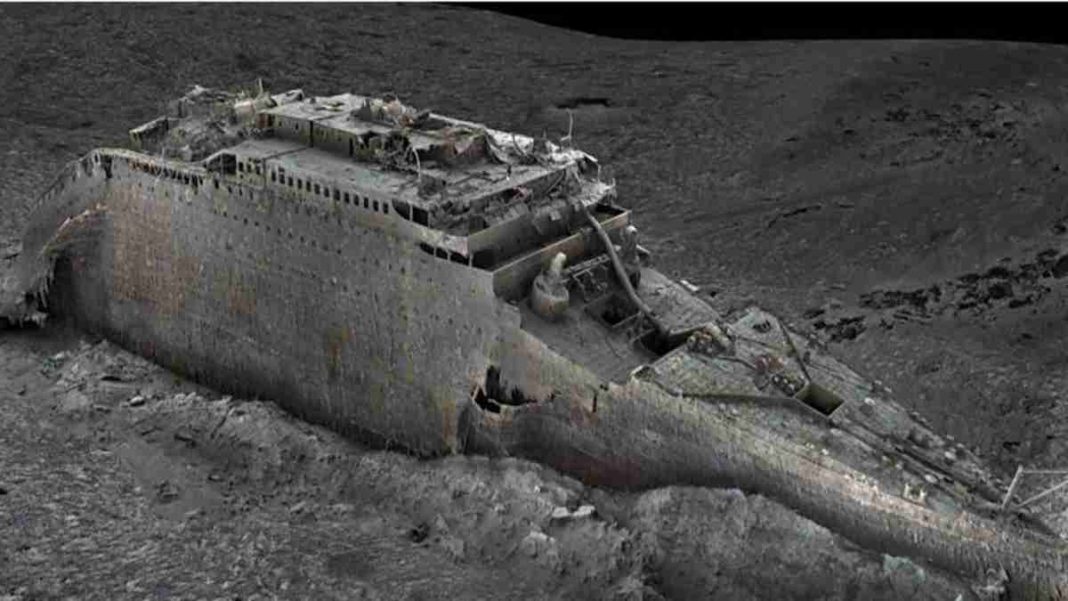UNITED KINGDOM: Utilizing deep-sea imaging technology, researchers have created the first complete computer scan of the Titanic, resting 3,800 meters (12,500 feet) below the surface of the Atlantic Ocean. This detailed 3D view provides new insights into the circumstances surrounding the liner’s tragic sinking in 1912, resulting in the loss of 1,500 lives.
Since its discovery in 1985, the Titanic has undergone extensive investigations. However, cameras could only capture glimpses of the decaying ship due to its size. The recent deep-sea mapping scan conducted in the summer of 2022 by Atlantic Productions and Magellan Ltd has changed that.
Over 200 hours were spent using remote-operated submersibles to examine the entire length and breadth of the wreckage. By capturing 700,000 photos from various angles, a precise 3D reconstruction was created.
Gerhard Seiffert of Magellan Ltd led this unprecedented underwater scanning effort, facing challenges such as the site’s 4,000-meter depth and strong currents. Strict protocols were followed to avoid any damage to the wreck, forbidding physical contact. The resulting scans offer a comprehensive view of the Titanic, with its bow and stern separated by 800 meters (2,600 feet) and divided into two halves. Surrounding the ship is a vast expanse of debris.
The ship, which vanished a century ago, now reveals itself with rust stalactites covering the bow and a disorganized pile of metal representing the stern, which collapsed when the ship sank. Unopened champagne bottles, statues, and intricate ship metalwork can be seen scattered among the debris. Personal items and numerous shoes are also found in the sediment.
Parks Stephenson, a Titanic specialist, expressed astonishment at the scans, as they provided a holistic and novel perspective of the wreck, allowing a better understanding of the true nature of the accident.
By studying the 1912 scans, researchers hope to uncover fresh details about the iceberg collision, such as whether the ship struck the iceberg along the starboard side or grounded on it. Additionally, the mechanics of how the ship impacted the ocean floor may be revealed by examining the stern.
Despite suffering from the corrosive effects of the sea and the destructive actions of bacteria, the Titanic has been momentarily preserved through the scans, enabling experts to analyze every aspect meticulously.
Also Read: Border Crossings at US Decreases by 50% following Title 42 Expiry



